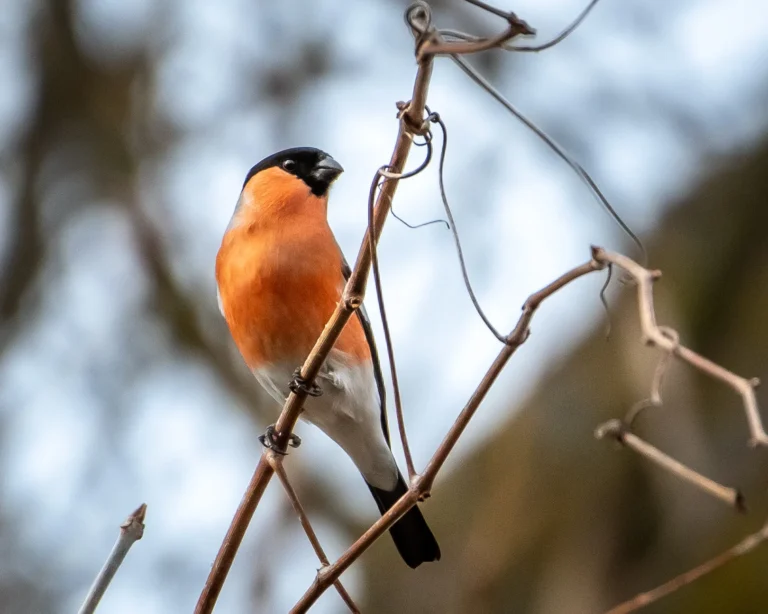
Eurasian bullfinch

Description and how to observe Eurasian bullfinch:
The Eurasian bullfinch is a medium-sized bird, easily recognisable by its bright colouring. Males have a bright red breast and black head, contrasting with grey backs and black wings, while females are more subdued in colour with brownish-brown chests. It is often found in areas of rich vegetation, forest edges or dense thickets in the Danube Delta. Spotting buds can be a challenge as they prefer to hide in tree branches and thickets. However, their distinctive, whistling song often betrays their presence.
What it feeds on Eurasian bullfinch:
The diet of the Eurasian bullfinch is predominantly vegetarian, consisting mainly of seeds, buds and berries. Especially in spring, they are seen feeding on tree buds, hence the popular name. During the nesting period, their diet also includes small insects to provide a protein intake for the developing young.
Threats:
Although not an endangered species, the Eurasian bullfinch faces threats such as habitat destruction, deforestation and pollution. Climate change may influence their long-term food sources and migration.
Ecological role:
More information about Pyrrhula pyrrhula:
The Eurasian bullfinch is often associated with Romania's winter landscapes, being a colourful and colourful presence against the backdrop of snow. It can especially be admired in the colder months, when it becomes more visible foraging for food. If you're in the Danube Delta during the cold season, look out for areas with dense vegetation and listen out for its melodious song to see it in all its splendour.
Discover now the most beautiful places in the Danube Delta!
In the following pages, you will find detailed information about:
- Top tourist destinations: Traditional villages, nature reserves, tourist trails and much more.
- Activities and attractions: Everything you need to know about boating, fishing, bird watching, cycling and other activities.
- Accommodation and catering: Accommodation to suit all budgets and restaurants serving traditional cuisine.




